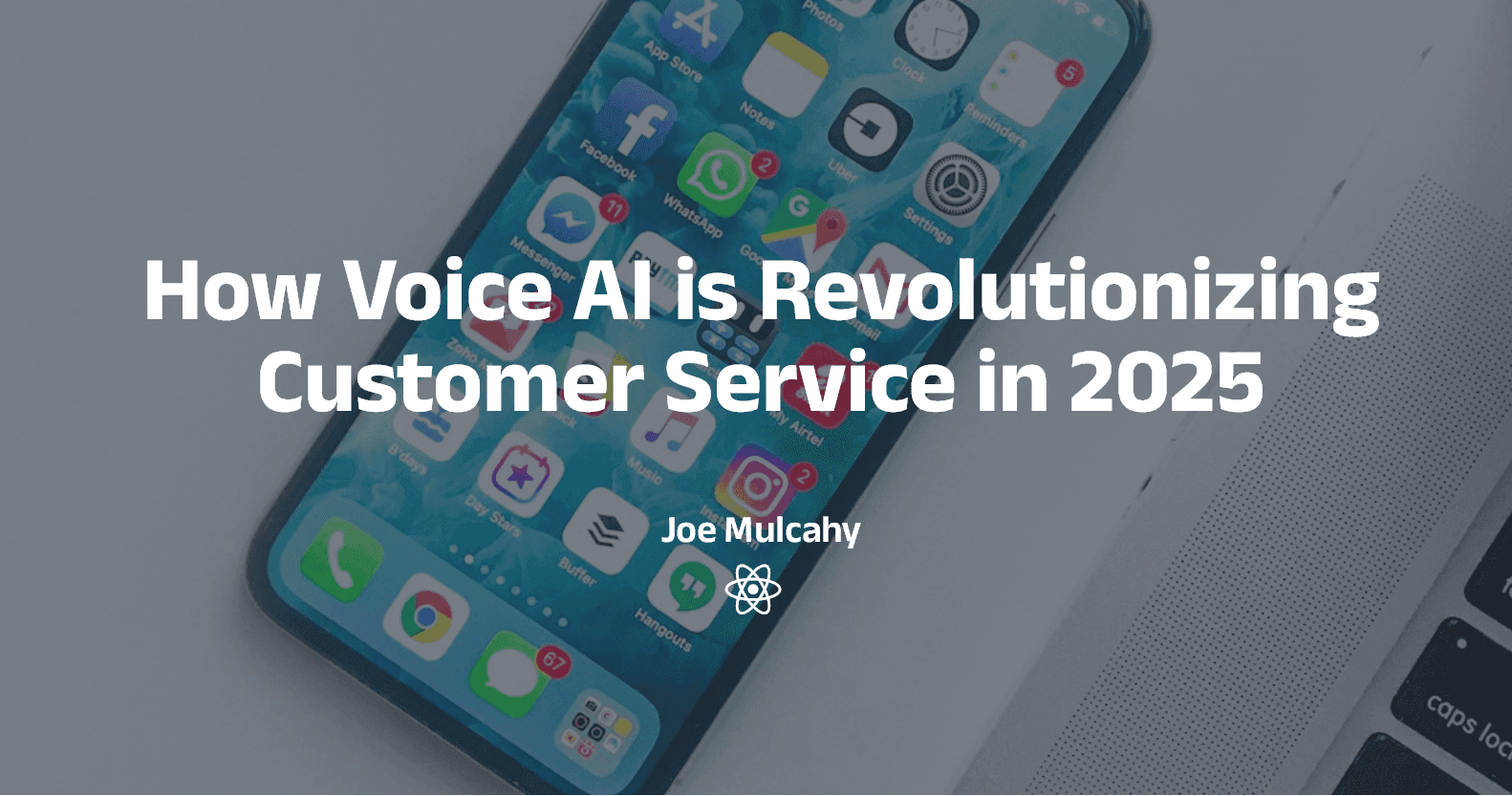
How Voice AI is Revolutionizing Customer Service in 2025
How Voice AI is Revolutionizing Customer Service in 2025
Picture this: It’s 2025, and your customers no longer wait on hold, sift through FAQs, or type out their questions. Instead, they tap an icon on your website or dial a number, and within seconds, they’re talking to an AI-powered voice assistant that sounds human, understands their needs, and solves their problems—24/7. This isn’t science fiction; it’s the reality of voice AI, and it’s transforming customer service faster than you might think.
At From Future, we’re seeing businesses across industries—from barber shops to real estate agencies—embrace voice AI to streamline operations, cut costs, and keep customers coming back. Here’s how this technology is revolutionizing customer service in 2025, and why it’s time for your business to get on board.
The Voice AI Takeover: Why Now?
Voice AI isn’t just a trend; it’s a seismic shift. By 2025, experts predict that 95% of customer interactions will be powered by AI, according to Accenture. Why the surge? Advancements in natural language processing (NLP) and machine learning have made voice assistants smarter, faster, and more affordable than ever. Plus, customers crave immediacy—waiting is so 2020.
Whether it’s scheduling an appointment or answering a quick question, voice AI delivers instant, human-like conversations that feel natural. And with costs dropping—think 60% cheaper for processing power compared to just a year ago, per OpenAI’s latest pricing—it’s no surprise businesses are jumping in.
The Game-Changing Benefits
So, what’s in it for your business? Plenty. Here’s how voice AI is rewriting the customer service playbook:
- Always On, Always Ready: Your customers don’t keep 9-to-5 hours, and neither should your support. Voice AI works around the clock, answering queries while your team sleeps—or focuses on bigger tasks.
- Slash Costs, Boost Efficiency: Automating routine calls can cut service costs by up to 30% and shrink handling times by 40%, says McKinsey. That’s money back in your pocket without sacrificing quality.
- Personalized Experiences: Voice AI doesn’t just respond—it remembers. It tailors answers based on past interactions, making customers feel heard and valued. Amazon’s already boosting sales by 15% with this trick.
- Handle the Rush: Peak season? No problem. Voice AI scales instantly, managing multiple conversations at once without breaking a sweat.
Real Businesses, Real Results
Don’t just take our word for it—look at the numbers:
- Bank of America: Their voice assistant, Erica, has tackled over 2 billion inquiries for 42 million users, slashing call volumes by 20%. That’s a lot of freed-up staff time.
- British Airways: AI chatbots cut response times in half, keeping travelers happy and operations humming.
- Your Local Barber Shop: Imagine a customer calling to book a haircut. Our phone-call voice agent checks the schedule, books the slot, and sends a reminder—all while the barber focuses on the client in the chair.
At From Future, we’ve seen similar wins with our clients. Our tap-to-talk voice agents help real estate agencies answer property questions on the spot, while phone-call agents keep busy environments like cafes or shops running smoothly.
Tap-to-Talk vs. Phone-Call: Which Fits Your Business?
Not all voice AI is the same, and that’s a good thing. We offer two flavors to match your needs:
- Tap-to-Talk: Perfect for websites, this low-latency option lets customers tap an icon and start talking. It’s a dream for quiet settings—like someone browsing homes online—where instant answers matter most.
- Phone-Call: Got a noisy environment? This one’s for you. It uses your phone’s built-in noise cancellation, making it ideal for on-the-go customers or businesses like barber shops that thrive on phone bookings.
Both pack the same AI punch, but the delivery makes the difference. A real estate agency might love tap-to-talk for its immediacy, while a bustling retailer might lean on phone-call for clarity. Which sounds like your business?
The Challenges (and How We Solve Them)
Voice AI isn’t perfect—yet. Background noise can trip it up, and privacy concerns are real. But here’s the good news: we’ve got it covered. Our phone-call agents use noise-canceling tech to shine in busy spots, while tap-to-talk thrives in calmer settings. And with robust security baked into every solution, your customer data stays safe.
Plus, we’re always training our AI to handle new scenarios—accents, tricky questions, you name it. It’s not a set-it-and-forget-it tool; it’s a partner that grows with you.
What’s Next for Voice AI?
The future’s bright—and loud. By 2025, voice AI will do more than answer questions. It’ll predict what customers need before they ask, thanks to smarter algorithms. It’ll even team up with tech like computer vision to diagnose issues visually—think a customer showing a broken product on a video call, and the AI figuring it out.
And here’s a twist: AI might just outshine humans in empathy. With the ability to read tone and respond with patience, it’s building stronger connections than ever, as Andreessen Horowitz points out.
Ready to Join the Revolution?
Voice AI isn’t coming—it’s here, and it’s changing how customers interact with businesses like yours. Whether you’re a small shop cutting no-shows or a marketing agency white-labeling our solutions, From Future has the tools to make it happen. Our voice agents—tap-to-talk or phone-call—fit your workflow, your budget, and your goals.
Haven’t tried it yet? Head to our site and test our tap-to-talk assistant. Hear for yourself why this is the future of customer service. Or, let’s chat about how we can tailor a solution for you. In 2025, the businesses that thrive won’t just keep up—they’ll lead. Will you be one of them?
